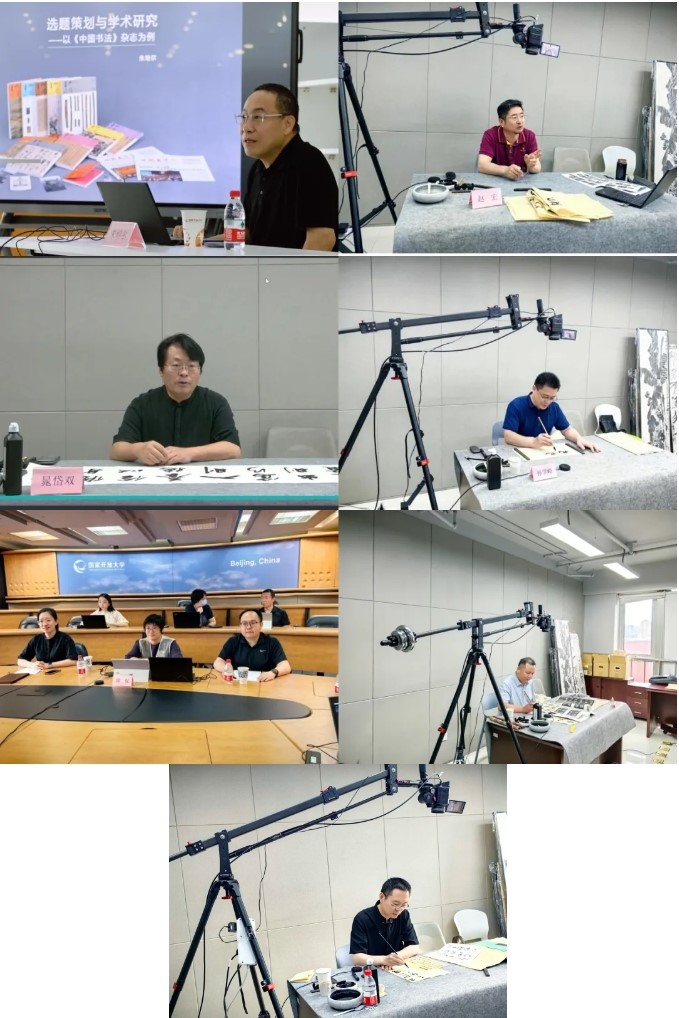 To deeply understand and implement Xi Jinping Thought on Culture, fulfil the Ministry of Education's aesthetic education enrichment action plan, and further strengthen the teaching team of the Calligraphy major at the Open University of China (OUC), an online training session for key teachers of the Calligraphy major within the OUC educational system was recently launched.
To deeply understand and implement Xi Jinping Thought on Culture, fulfil the Ministry of Education's aesthetic education enrichment action plan, and further strengthen the teaching team of the Calligraphy major at the Open University of China (OUC), an online training session for key teachers of the Calligraphy major within the OUC educational system was recently launched.
The session aims to enhance teachers' professional abilities and improve the quality of theoretical and practical courses in calligraphy. Li Song, a member of the Party Committee and vice president of the OUC, attended the opening ceremony and delivered a speech. The event was hosted by Jin Yan, vice dean of the School of Art.


Seven renowned calligraphers, including Zhu Pei’er, Zhao Hong, Chao Daishuang, Sun Xuefeng, Zhou Kan, Lu Di, and Wang Gaosheng, were invited to lecture on contents such as the topic selection and writing of research papers on calligraphy, the teaching guidance of five calligraphy styles (seal script, clerical script, regular script, running script, and cursive script), and calligraphy teaching methods.
Combining theory and practice is a highlight of this training session. Zhu Pei'er, editor-in-chief of the Chinese Calligraphy magazine, started with how to select topics for calligraphy research papers and lectured on professional issues such as academic papers, project applications, and academic norms. Professor Zhou Kan from Capital Normal University, considering the characteristics of OUC's calligraphy teachers, gave detailed lectures on calligraphy teaching methods. Experts also analysed the issues of copying and creating in calligraphy teaching, starting from the selection of stele rubbings, based on the specific learning conditions of OUC's calligraphy students.
This training is not only a deep cultivation of professional knowledge, but also an opportunity to enhance the participants' aesthetic sensibilities and teaching abilities. Participants expressed that the training not only improved their teaching skills but also broadened their academic horizons.
In the future, the School of Art will further address social needs and students' demands, expanding new growth points based on the current junior college to undergraduate programmes. It will introduce undergraduate programmes starting from high school and junior college qualifications, actively promote the reform of adult art education models, and explore the integration of single-subject courses with junior-college and undergraduate programmes. By leveraging the advantages of the OUC system and the blended teaching approach of online and offline integration, the school aims to provide students with a richer and more diverse learning experience. Additionally, the school will actively utilise the exemplary role of key teachers to drive the growth of more educators, contributing to the dissemination of calligraphy education in China through the OUC's efforts.
A total of 235 core teachers from 31 branches and 72 study centres of the OUC participated in this training.
Written by Wang Shaofan, photos by Zhuge Huanyu, OUC